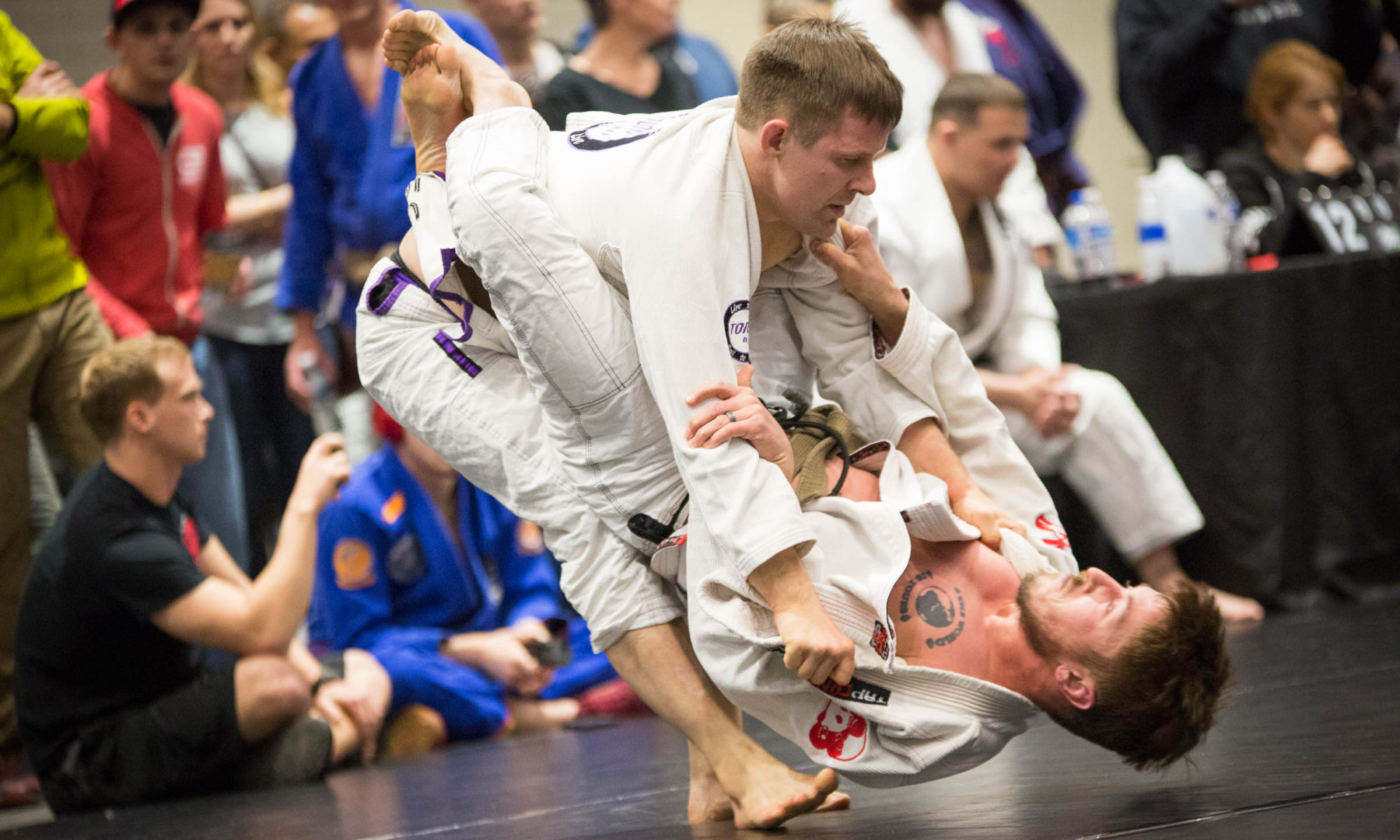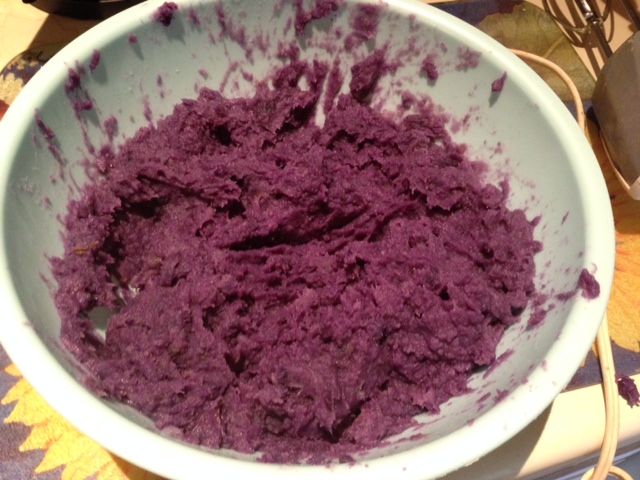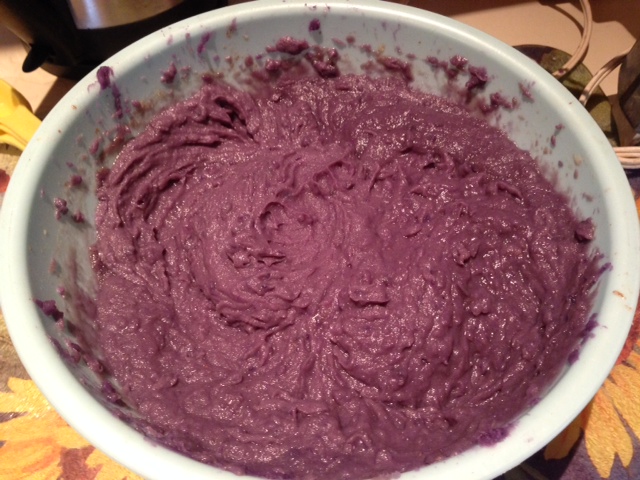If — like me — you’re a fan of Doctor Who and jiu-jitsu, perhaps you’ll be interested in a rash guard I designed featuring a certain Police Box.
A few other projects about to come to fruition soon as well, I hope.

Never Stop Learning
If — like me — you’re a fan of Doctor Who and jiu-jitsu, perhaps you’ll be interested in a rash guard I designed featuring a certain Police Box.
A few other projects about to come to fruition soon as well, I hope.
I was disappointed that the Internet seemed focused only on the Ronda Rousey’s armbar against Miesha Tate (and on Anderson’s devastating leg injury). Hence, I took it upon myself to make this .gif of Ronda’s sick throw.
If you’re reading this, you either do Brazilian jiu-jitsu or know someone who does Brazilian jiu-jitsu. Last year, I put together a Gift Guide post that had the latter folks in mind. Let’s do this again, once more with feeling.
If you train, you probably have a pretty good idea of what makes a cool gift for your friendly neighborhood martial artist. If not, you might wind up with beautifully-wrapped karate gi under the tree and a recipient trying desperately to force a smile. Don’t let this happen to you!
Note: I own and enjoy most of the things below, so I’m not just shilling for myself, I promise. And as most folks who read the blog know, I do some work for Toro BJJ, so I’m only going to have one Toro-related entry.
Items on this list range from $10 or so to “however much you want to spend,” so hopefully there’s something for everyone.
INEXPENSIVE ($10-20)
Jiu-Jitsu In The South Zone, 1997-2008: Like BJJ history? Check this out. I got this book earlier this year on the recommendation of a black belt, and it didn’t disappoint. The lesson, as always: listen to what the black belts say. It combines the Global Training Reports into one handy package, and contains excellent slice-of-life material about incredible jiu-jitsu practitioners — including many you might not have heard of and including stories you almost certainly haven’t heard.
Toro BJJ T-Shirts: Yes, I made these shirts. But I wouldn’t do work for Toro if I didn’t believe in the products, and obviously I made the Hapkido Man and Double Guard Pull shirts because I think they are funny takes on our unique subculture. Unfortunately, the “Just Train” shirt appears to be sold out right now. All the Cageside and Toro shirts are very comfortable and moderately priced, and a good shirt is a great gift.
MODERATELY EXPENSIVE ($21-70)
Roots of Fight Brazil Hoodie: Generally, I am a huge hoodie fan. Specifically, I am a huge fan of this one: it’s modeled after the original Academia Gracie gear. One of my good friends has this. It’s comfortable, stylish, and distinctive. It’s also versatile: if your friends are always giving you static for wearing only jiu-jitsu gear, this is subtle enough that only the in-the-know will notice.
A Hemp Belt: I’m a big believer in hemp as a fabric. I also support efforts to bring back America’s manufacturing sector. That’s why I’d like my next belt, whenever that comes, to be The Green Gi’s American-made hemp belt. (Sidenote: their hemp gis are shipping this week as well, and I’m very excited to get mine. I pre-ordered.)
Important note for non-BJJ folks: if you’re considering buying a belt as a gift, here’s one thing to do. You want to get the belt, not tell them about it, and give the belt to their instructor. Just say “hey, I don’t know anything about this whole belt promotion thing. But I wanted to do something for [Insert Name], so whenever it happens, could you hand them this belt and let them know it’s from me?” I know some people don’t mind having a spare belt around, but personally, I want to wear the belt my instructor hands me.
An Art Print: I’m a huge fan of Meerkatsu, who is a terrific artist and also does a great deal of charity stuff. He has a bevy of products to choose from, including rash guards and shirts and spats and … you name it. This year, how about an art print? I’m particularly fond of the Rosie The Riveter “Try Jiu-Jitsu” piece. Personal tastes can vary, so if Meerkatsu isn’t your speed, maybe something by John Smalls suits your fancy.
Meerkatsu has his own gift guide, BTW, which contains many items not found here.
BALL SO HARD UNIVERSITY EXPENSIVE ($70 and up)
Dom Gi Material Jacket: For a little heavier-duty jacket, I love this offering from Dom. I got to try one on at the Mundials and really dug the look, fit and feel. It’s the season for warmth and collar chokes, and what better to serve both needs than a jacket made of gi material?
Membership to an Online Site: This could be tricky, because there are a lot of sites out there. The good thing is, a lot of the sites are great. I have a membership to MendesBros.com and have been really happy with it. The Marcelo Garcia site MGInAction has a mountain of content from one of the greatest of all time. But if you want something fresh and new, the Caio Terra online training site is supposed to open in about 36 hours.
Ryan Hall’s Guard Passing DVD Set: Ryan Hall is an elite competitor and a top-notch instructor. I’ve only had the chance to watch a little of this, but it is just what I expected so far: excellent concepts, critical details and an expert’s ability to convey the information. His earlier DVDs are also excellent, and this is new: a great addition to any grappler’s video collection.
Of course, the Toro Uchina gi should be out sometime in February, so if you want to give *me* a present, you could wait and get one of those. In the meantime, I hope one of these works for you.
Twice a week, I do 6 a.m. drilling. Most days we have between two and four people, but sometimes it’s just me and the cold gym.
We’ve all been there: you show up to open mat, put a gi on, get stretched out … and there’s no one to keep you company but the crickets. Or maybe you’re traveling and jonesing to train, but you can’t find a gym in the area. Or hey, maybe you’re just feeling antisocial.
Whatever the circumstances, sometimes you want to improve your jiu-jitsu but can’t find another grappler around to work with. You don’t want to waste that free time, do you? Of course you don’t, especially if you got up at 5:30 just to carve out a training session.
Some people collect baseball cards. Others collect autographs. I collect good drills, and I’ve been lucky enough to pick up some great solo training tips from terrific black belts. Here are some solo grappling drills to do on your own. These have been my salvation more than once when I’m by myself at 6 a.m.
Breakfall to Stand in Base Flow Drill: This drill combines two of the most fundamental Brazilian Jiu-Jitsu techniques. First, from a standing position, do a back breakfall. Then, come up to one side, with one foot posted in front of you and the opposite-side hand posted behind you. Rotate your hips toward the mat and stand up in a nice base.
Check out how to properly stand up in base here, just 12 seconds in:
[youtube=http://www.youtube.com/watch?v=vKShLC1ANrY#t=0m12s]
Since you’re back to a standing position, you might as well breakfall again and stand up in base on the opposite side, posting your other hand and other foot. This is a nice drill to warm up with, since you can get a good flow going, and it works two critical fundamental movements.
Hip Extension to Combat Base Drill: Roy Marsh, head instructor at Sandhills BJJ and a black belt under Royce Gracie, showed me this one. From your back, roll up onto your shoulder and extend your hips in the air. One leg should be straight and the other leg bent in front of you. From there, roll up to a combat base position (one knee up, one leg folded, elbows in tight). Roll back and repeat on the other side.
Be sure to step a fair distance with your extended leg. This drill can double as a good stretch, too: once you’ve come up to the combat base position you can play around with that.
Bridge to Turtle Drill: From your back with your feet in tight, bridge over one shoulder. As you thread our bottom leg back under to come to the turtle, sweep the mat with your mat-side hand to simulate clearing the hooks from someone trying to attack your back. Finish in a tight turtle position.
You can either sit to your back or roll over your shoulder to return to the original position. Then bridge to the other side. Again, this can be a nice flow.
Leg Circles From the Guard: Some people call this drill “the eggbeater.” You see a lot of guys doing this one to warm up for tournaments, and with good reason: it’s a core movement in the open guard. From your back, you rotate your legs in a circular motion like a windmill or an eggbeater. You can do this in each direction.
I mention it mainly to add one detail: a lot people do this drill with their back flat on the mat instead of raising the hips off the mat and moving from side to side during the leg circles. This is an important part of getting the movement down.
[youtube=http://www.youtube.com/watch?v=08Hpmef70XI]
Hip Bump Sweep Drill: For many of us, the hip bump is the first sweep we learn in jiu-jitsu. That’s because it works. Another good solo drill involves putting something in front of you to mimic your opponent – I use a hanging heavy bag, but you can use something as simple as your coiled belt – and practicing the hip bump motion. From the guard position, roll up smoothly onto your shoulder, elbow and then hand, plant your foot and simulate a hip bump. Again, be sure to work both sides.
Start slowly to be certain you hit each step of the technique, and gradually work your way up to a solid pace. Royce Gracie black belt Jake Whitfield showed me this one, and told me that just doing this a few minutes each day would improve my hip bumps – and all the techniques that a good hip bump sets up. He was right.
The hip bump starts at 1:03 in this video:
[youtube=http://www.youtube.com/watch?v=tZLYg0IKEZs#t=1m03s]
OTHER RESOURCES
I think it helps to pick up a variety of drills from lots of different sources. That way, you have a menu of options for when you’re by yourself and when you’re with a group or a partner. Having many drills to choose from means you always have something to work and no excuse for getting bored.
To that end, if you’re looking for more, the mighty Jason Scully has a great video of 33 solo drills.
[youtube=http://www.youtube.com/watch?v=EXjP50SOwK4]
Scully also put together 30 animal-themed movement drills as well.
[youtube=http://www.youtube.com/watch?v=uO8u_3Jmiqw]
Next post along these lines: some great partner and group drills.
The new Toro BJJ gi has a unique feature that you might be happy about. Take 30 seconds and watch us demonstrate it.
[youtube=http://youtu.be/qH18FKCMekU]
On a related note: I defend my thesis tomorrow, and I’m pretty excited about that. Almost as excited as I am for the new “Thank You For Not Double Guard Pulling” shirt I made for Toro.

Wear it while shooting takedowns, or coming up to take that advantage point.
Everyone loves to roll: sparring against a live, resisting opponent isn’t just what makes jiu-jitsu so effective at preparing for real life situations, it’s also fun and unpredictable and exhilarating.
Not everyone loves to drill. I can understand this. It’s repetitive by nature, and usually features movements you’ve done thousands of times already.
This is also its value. Repeating those core movements over and over means you can do them instinctually when it matters. Part of the power of jiu-jitsu is that technical knowledge gets you out of bad spots before you get into bad spots. If you’ve drilled enough mount escapes that your body automatically goes into one even before the guy has secured the mount, you’ve maximized your chance of success.

Even the people that don’t enjoy the process of drilling recognize, usually, its benefits. I’m one of the lucky few that actually enjoys drilling. It’s more than recognizing the practice’s value: I actually enjoy seeing the movements get smoother. One of the best teachers I know says “slow makes smooth: smooth makes fast.” It’s gratifying over the time I spend drilling, even if it’s just a few minutes, to see the movements become more ingrained.
I like drilling so much that, for the past 6 months or so, I’ve been doing 6 a.m. drilling two or three days a week. This is a way to get mat time when there are no classes scheduled (and, to be honest, when my girlfriend is asleep). I’ve noticed tangible improvements: I hit moves I never used to hit, and I know moves I never used to know, even if I can’t hit them yet.

These are some reasons I think drilling is so important. I’ll close this part by pointing out that Rorion Gracie and Fabio Gurgel still drill the basics. If they do it, why shouldn’t we?
Now, let’s talk about drilling method. There are two common problems that I try to avoid.
First, there is the time issue. Virtually no one who loves jiu-jitsu has as much time on the mats as they would like. It’s tempting to use what limited time we do have to do what we enjoy most — and for most people, that’s rolling. This isn’t bad, necessarily, but it’s important not to crowd out vital drilling time.
Rolling is certainly necessary to improve, but I like to have time set aside to really focus hard on correct technique. As much as I love rolling, when I’m 9 minutes deep into a sparring session with a huge guy on top of me, I don’t always hit the details I need to. Drilling helps counteract the tendency to get sloppy in those moments.
That’s why I started doing the 6 a.m. sessions. I didn’t have the time to do what I needed to, so I asked my instructor if he’d mind. Luckily, my instructor is awesome, and completely understands the mat addiction. Best, now I have specific time that is set aside just to do drilling.
There is one other risk that I try to avoid, though, and Roy Marsh hints at it in this post. It’s very tempting, given limited drilling time, to hit only the cool new moves. Fancy attacks that are popular in sport tournaments can crowd out the basic moves that help build a solid foundation.

I noticed this tendency in myself when I learned berimbolo. I’m a flexible guy, and spinning underneath guys is really fun! There’s nothing wrong with that, in my view. Where it starts to go wrong is when you do that stuff to the exclusion of the core movements and techniques.
Here’s how I personally counteract that tendency in myself. I make lists of what I want to work on. In the mornings, I drill with a partner for an hour: we set a clock for three minutes, and each of us gets to drill whatever we want for those three minutes. Then we switch. So, for example, I would do three minutes of hip bumps on him/her; then he/she would choose a technique (say, a scissor sweep) and do three minutes of those on me.
Depending on how on time people are, that usually gives me time to drill between 8 and 10 techniques. I make a list of everything I want to work on, and I divide those techniques into categories.
Each 6 a.m. session, I try to do the following:
2 Standing Self Defense Techniques
2 Basic Bread-and-Butter Ground Techniques on Bottom (from the Blue Belt Curriculum)
2 Basic Bread-and-Butter Ground Techniques on Top (from the Blue Belt Curriculum)
1-2 Takedowns
2 New Techniques I Want To Incorporate (usually from seminars I just attended)
Our school emphasizes the self defense curriculum, so it’s important to get work in on those items. To give you an example, during a given session, I might drill these things:
Two-hand collar grab with hands apart
Two-hand collar grab with hands together
Arm bar from guard
Triangle from guard
Knee slide pass
Stack pass
Single leg
A guard pass Dave Camarillo taught at a seminar last week
A De La Riva sweep from MendesBros.com
This gives me a good mix of the basic and the new. It helps me ingrain the fundamental movements, but also makes sure I don’t forget the new stuff I just learned at a seminar by an amazing visiting instructor. It helps me work out the kinks in techniques I think I know, and figure out the core elements of techniques I know I don’t.
There are ways you can mix and match, too: for example, I might do 90 seconds of collar grab with hands together and then 90 seconds of collar grab with hands apart. It’s all a matter of comfort level and goals.
This is far from the only way to do it, of course. I’ve been lucky to be around a lot of incredible black belts and world-class competitors, and many of them have different training methods.
But they all believe in drilling, and that’s why I do too.
My thesis is due Nov. 25, so although I’m bursting with post ideas and new sketches to share, long posts are going to have to wait for a bit.
However: Boomer, gear maker to the stars and the guy behind Cageside MMA and Toro BJJ, did an interview where he talks about the gi I designed for Toro. You learn Boomer’s initial reaction to my designs, which … well, no spoilers here. It’s short, check it out.
My friend and teammate D’Juan Owens just came back from Peru, where he’d been living, training and fighting professionally for a few months. When he knew he was headed back, D’Juan posted a Facebook status about getting ready to finally eat all the great food he’d been craving — but couldn’t while training.
Now, I’ve been missing Okinawa lately. That might explain the gi design. But I’ve also been missing the comfort food I ate while I was living there. Okinawan food is fantastic, especially that most glorious of tubers, the Okinawan purple sweet potato. It’s sweeter than any yam you’ve ever had (and, interestingly enough, is a member of the morning glory family instead of the potato family).
Plus, it’s beautiful. Check it:

The tasty tater, known in Okinawa as beni imo, has been declared by Dr. Mehmet Oz to be a nutritional superfood. That really doesn’t
All manner of products are made from beni imo, from ice cream to candy to bread to chips. When I moved to the American South, home of sweet potato pie, it seemed only normal to make Okinawan purple sweet potato pie. I did some experiments. This isn’t a food blog, but I want to show you how to do it. The process and results are beautiful and delicious at every step.
Here’s how you can do it if one of your teammates returns from overseas and you want to bake them a pie. See how I brought this back to BJJ?
TO MAKE OKINAWAN PURPLE SWEET POTATO PIE, YOU WILL NEED:
* At least one pound of Okinawan purple potatoes (in North Carolina’s Triangle region, you can get them at Grand Asia Market in Cary)
* 1/2 cup of butter
* 1 cup of sugar (you don’t really need this, because the tater is sweet enough, but you can use it. I use raw turbinado sugar)
* 2 eggs
* 1/2 tsp cinnamon, 1/2 tsp nutmeg, 1 tsp vanilla extract (spices to taste)
* You will need a pie crust, too, Einstein.
STEP ONE: BOIL THE POTATOES
Boil the potatoes for 40-50 minutes, until they’re soft all the way through.
I’ve boiled them with skin on, which makes the skin slide off easily, and after peeling them: the results seem to be the same in terms of tastiness and in terms of making this crazy purple-colored water. Someday I’m going to try to do something with the water, be it a soup stock or a clothing dye for someone’s new white gi.

STEP TWO: MASH THE POTATOES WITH THE BUTTER
Put the potatoes in a big bowl. Take the 1/2 cup of butter (that’s one stick for all you non-measurers out there) and put it in the middle of the potatoes to facilitate melting. Then smash them like you’re in the world’s meanest side control position on them. Mash all the pieces out until the texture is basically smooth, like this:

STEP THREE: STICK YOUR FINGER IN THIS MIX.
Eat a little of the mashed potatoes. Taste how sweet they are, even without sugar. Get excited.
This step is not optional.
STEP FOUR: MIX IN THE OTHER INGREDIENTS AND BLEND
Add the eggs, spices and vanilla extract. If you have a hand mixer, blend it all together. Even if you don’t, using a hand potato masher has worked for me before. (Any old port in a storm). This lightens up the purple color a very little, so now it looks like this:

STEP FIVE: POUR IT INTO THE PIE CRUST
I usually make crust from scratch, but this time I got pressed for time and bought the vegan, gluten free crust from Whole Foods. It was the only crust they had left. I’m sorry, D’Juan.
Anyway, pour it into the crust. Back it at 350 for about 50 minutes. Put a chopstick into the top of it, and if it comes out clean (i.e., nothing is stuck to it), it’s done.

There you have it. Now take it to training and tell your instructor I’m working on getting it Gracie Diet approved.
I have seven or eight t-shirt designs in the works for Toro BJJ, and one of the first ones is out now! The best jokes are in-jokes, and this one hearkens back to the Gracies In Action videos.
Check it out, and watch an excerpt of the clip it’s based on here.